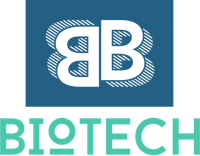After enduring multiple waves of layoffs, hiring freezes, and funding droughts, biotech professionals were hoping 2025 would signal a turning point for the industry’s job market. But so far, that rebound remains elusive. Despite a handful of positive developments in venture capital and pipeline progress for select companies, the broader employment picture remains grim.
From cautious employers maintaining tight budgets to an influx of candidates competing for fewer roles, the biotech job market still feels more like a battlefield than a bounce-back. So where exactly do things stand – and what can job seekers expect as they navigate this challenging terrain?
2024: A Brutal Year for Biotech Employment
By almost every measure, 2024 was another difficult year for biotech professionals. Layoffs continued across all stages of company maturity, from small preclinical startups to large-cap pharma giants undergoing restructurings. According to Fierce Biotech’s Layoff Tracker, the sector saw nearly 190 rounds of layoffs in 2023 – and that momentum carried into 2024. One of the more high-profile examples was Bristol Myers Squibb’s announcement of roughly 2,200 job cuts tied to portfolio adjustments and cost-saving initiatives.
Behind the job losses lay a range of challenges: clinical trial failures, regulatory hurdles, increased M&A activity resulting in redundancies, and a still-skittish funding environment. Though venture investment did see a modest uptick – reaching $26 billion across 416 rounds in 2024, up from $23.3 billion in 2023 – the reduced deal count suggests VCs are becoming choosier. Companies able to raise funds often did so by signaling operational discipline, not aggressive expansion.
This belt-tightening translated into leaner teams and reduced headcount planning. Job postings plummeted. According to BioSpace, active listings in Q3 2024 fell to 21,548, a 12% drop from the same period in 2023. At the same time, the job response rate jumped by 51%, illustrating the growing mismatch between supply and demand.
In short: more job seekers are chasing fewer jobs – and the bar to get hired has never been higher.
Early 2025: Green Shoots or More of the Same?
As 2025 unfolds, hopes for a full recovery have yet to materialize. Hiring remains sluggish, and companies are still operating in “survival mode,” particularly those without near-term catalysts or strong balance sheets.
“The job market didn’t magically improve just because it’s 2025,” biotech recruiter Bryan Blair noted in a recent LinkedIn post, summing up the collective industry mood.
Hiring today is largely driven by immediate, high-priority needs – roles tied to critical regulatory filings, late-stage clinical trials, or strategic business development initiatives. Most other functions remain frozen, with some companies even postponing backfills for months. The volume of open roles remains significantly below pre-pandemic levels.
In addition, a growing number of employers are walking back remote work options, especially for scientific and operational roles. Biotech hubs like Boston, San Francisco, San Diego, and Raleigh-Durham have reemerged as geographic gatekeepers, disadvantaging qualified candidates based in secondary markets or abroad.
Tough Times for Entry-Level Talent – and Not Easy for the Experienced Either
Perhaps the hardest hit group is early-career professionals. Many recent graduates with master’s or doctoral degrees, as well as experienced research assistants and junior scientists, are finding themselves sidelined despite strong academic backgrounds.
Even for mid-level professionals, competition is intense. Recruiters often describe the hiring process as one of surgical precision – companies are not hiring “good fits,” but “perfect matches.” Senior and executive-level professionals also report difficulty landing interviews unless they check every box.
Meanwhile, the fallback strategy of freelancing has lost some of its former viability. The market is saturated with consultants, particularly in functions like medical writing, regulatory strategy, and clinical project management. Rates are being driven down, and engagements are shorter, limiting sustainability.
Pockets of Demand: Where Biotech Is Still Hiring
Despite the downturn, some areas continue to see demand – albeit highly targeted:
- AI/ML and Data Science: Especially in companies focused on drug discovery, biomarker discovery, or predictive modeling for clinical trials.
- Regulatory Affairs: Candidates with IND, NDA, or BLA experience are in short supply and high demand.
- CMC and Manufacturing: Late-stage or commercializing biotechs are seeking professionals who can scale production and navigate quality control systems.
- Business Development and Alliance Management: With M&A activity still simmering, deal-making and strategic partnerships remain a top priority for growth-stage firms.
That said, these are exceptions, not indicators of an industry-wide rebound.
How Job Seekers Can Adapt and Survive in 2025
In this tough environment, the rules of job hunting have changed. Spray-and-pray applications won’t cut it. Success depends on a refined, strategic approach – and a great deal of patience.
Here’s what job seekers should prioritize:
- Sharpening Your Profile: Tailor your resume and LinkedIn profile to highlight measurable impact, cross-functional collaboration, and adaptability.
- Upskilling and Strategic Positioning: Bridge gaps in your skill set. If you’re in R&D, consider building regulatory or data fluency. If you’re in clinical ops, learn more about decentralized trial technologies or AI-driven trial design.
- Location Awareness: Be open to relocation or hybrid work if remote roles are not viable. Proximity to HQs can significantly boost your chances.
- Stay Visible and Connected: Attend virtual conferences, contribute to industry discussions, and network – both online and offline. A referral from an insider still goes a long way.
- Monitor Funding News: Follow the money. Companies that have recently raised significant capital or gone public are more likely to hire in the near term.
And perhaps most importantly, temper your expectations. In many cases, especially for senior professionals, the “ideal” job may not exist in this market. Taking a role that provides stability and learning opportunities – even if it’s a step sideways or slightly back – may be a wise move.
What’s Next for the Biotech Job Market?
Although some signals suggest a bottoming out – such as improved IPO conditions and more robust early-stage VC rounds – the broader industry remains cautious. Analysts predict that hiring activity could pick up in late 2025, but that depends heavily on clinical success rates, macroeconomic stability, and continued investor confidence.
Until then, the biotech job market will likely remain selective, centralized, and slow to thaw. For job seekers, the keys to success in 2025 are persistence, adaptability, and the ability to stay proactive in an industry that is still navigating a long road to recovery.





